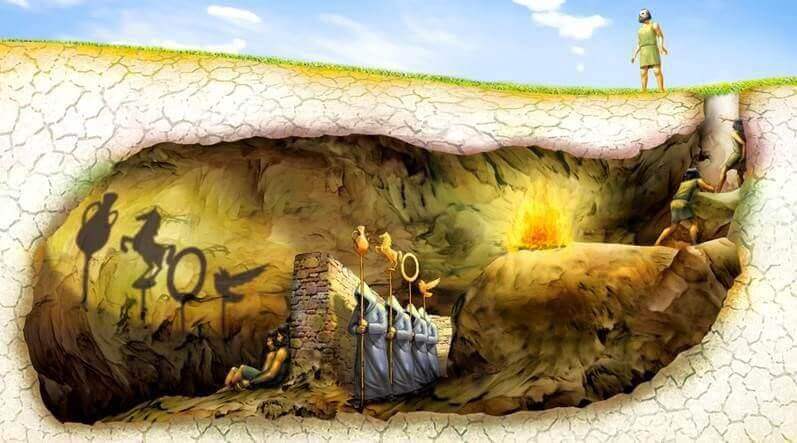
You can contribute through PayPal, Patreon, Venmo and Crypto. It’s hard to rely 100% on ads, and your contributions will help us continue providing the best cultural and educational materials to learners everywhere. If you would like to support the mission of Open Culture, consider making a donation to our site. Big thanks to Eren at FilmAnnex for sending this one our way.

And, above, some clever artists provide an award-winning animation of the cave scene using nothing other than clay. This is what we can call consensual reality, or to use a more fancy word, the social matrix. Known as the “allegory of the cave,” this passage lets Plato offer commentary about the nature of reality and human understanding. In an episode of Philosophy Bites, Simon Blackburn (Cambridge University) talks with Nigel Warburton and David Edmonds about what Plato really wants to say here. All the prisoners share the same reality: the shadows on the wall. They can only see manipulated shadows on walls, and that’s about all. Imagine prisoners shackled in a cave, their heads chained in such a way they can’t look out into the world itself. To get through this state, however, it is necessary to continue advancing and discovering new knowledge.In Book VII of The Republic, Plato paints a dark scene for readers. Liberation involves objectively analyzing the extent as to which one’s beliefs falter, which of course produces uncertainty and anxiety. If we have no reason to question something, we don’t, and its falsehood therefore prevails.įew manage to access the second stage, liberation, which is achieved through questioning, research, and study. One of the explanations as to how deception is so profoundly impactful on human life is that, for Plato, it is composed of what seems to be an obviously superficial point of view. If we compare this by means of the stages of Plato’s allegory, we will obtain a more detailed analysis of the relation of the story to the present.įirst of all, there is deception which posits that the reality provided by these sources of information are merely shadows or breadcrumbs of the intended message or actual truth in other words, the general population consumes information without even questioning it. Various scenarios are easily comparable to these ideas one great example is the information that is shared today across the world’s media, including social networks and the rest of the internet.

#ALLEGORY OF THE CAVE EXPLAINED SERIES#
The story brings together a series of very common philosophical themes, namely, the existence of a truth that exists independently of individuals’ opinions the presence of constant deceptions that keep us from truth and the qualitative change needed in accessing truth.


This entire story is an allusion to Socrates’ effort to help men to reach the truth and their failure in doing so only to be condemned to death himself. When this prisoner tries to untie and raise his former companions towards the light, Plato believes them to be capable of killing him he is sure they would indeed take his life if given the opportunity. Its main point is simple: The things that you believe to be. Preceding the cave allegory in The Republic are analogies of the Sun and the Divided Line, which set some of the. Platos allegory of the cave challenges readers to reconsider their understanding of reality. We can see the meaning of the Allegory of the Cave, as presented in the Book VII of Platos The Republic, as discussing, or reflecting on, how far people. In book seven of the ten books of The Republic (sections 514a to 520a), Plato presents a dialogue between his old mentor Socrates and Plato’s older brother Glaucon. The joke would be that this would prove his eyesight to have been impaired by his passage from sunlight to the darkness of the cave. Plato’s Description of the Cave in the Republic. The allegory of all allegories, Platos Allegory of the Cave is not the rosiest take on the reality of human existence. The allegory ends, however, with the prisoner entering the cave once again to “free” his former companions in chains, thereby provoking laughter. The Allegory of the Cave is a story told by Plato to illustrate what he believes to be true, that people are like prisoners in a cave who can only see shadows.


 0 kommentar(er)
0 kommentar(er)
